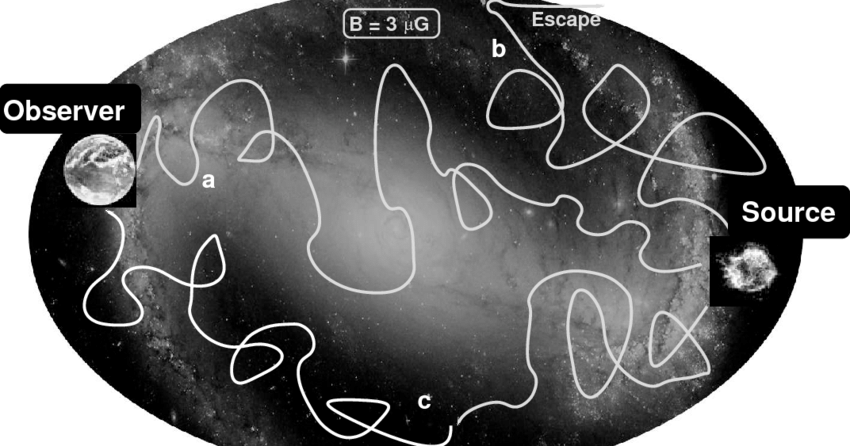
- Cet évènement est passé.
WHEN ASTROPARTICLES MEET PLASMA TURBULENCE: MICRO-PHYSICS OF COSMIC-RAY TRANSPORT IN THE GALAXY
2 juin 2022 | 11h00 – 12h00
Silvio Cerri – Lab. Lagrange, OCA

The origin and propagation of cosmic rays (CRs), as well as their interaction with the turbulent medium that they propagate through, is one of the clearest intersection between astroparticle physics and plasma astrophysics, where indeed plasma processes play a crucial role. More than a century after the discovery of cosmic radiation, our understanding of the processes responsible for CR transport are still under debate, lacking of a self-consistent theory. After nearly sixty years, the theory of CR transport still relies mostly on a phenomenological model of pitch-angle scattering on Alfvénic turbulence, adopting a naive picture of spatially isotropic and homogeneous diffusion through the whole Galaxy. Although this simple model offers the possibility to fit a number of observables, simple theoretical arguments based on the anisotropic nature of the Alfvénic turbulent fluctuations show that their cascade should not be able to efficiently confine CRs. The propagation of CRs through the turbulent interstellar medium (ISM) of our Galaxy may be better described in terms of quasi-linear theory (QLT) of pitch-angle scattering on turbulent fluctuations that are a mix of different magneto-hydrodynamic (MHD) waves, whose cascades exhibit different anisotropies with respect to the magnetic-field direction and their properties likely vary in different environments of our Galaxy.
In this talk, we discuss the micro-physics of cosmic-ray (CR) diffusion as resulting from pitch-angle scattering onto the three modes in which the MHD cascade can be decomposed: Alfv\’enic, slow- and fast-magnesonic. We show that Alfvén modes are indeed subdominant in confining CRs due to their anisotropic cascade and we discuss some key features that point towards fast-magnetosonic modes as the main responsible for CR diffusion above ~ 200 GeV. Based on this picture, we implement the resulting diffusion coefficients within a two-zone model in the global CR-transport code DRAGON2, i.e., explicitly distinguishing between the turbulent properties (and resulting diffusion coefficients) of the “Halo » and of the « Warm Ionized Medium ». Remarkably, we obtain the correct propagated slope and normalization for the charged species taken into account, without any \textit{ad-hoc} tuning of the transport coefficients. Finally, some still open points and future directions will be discussed.
